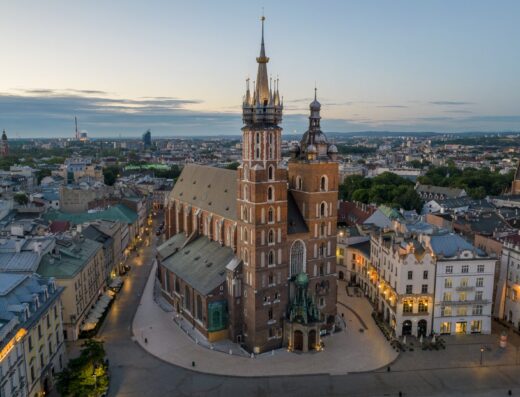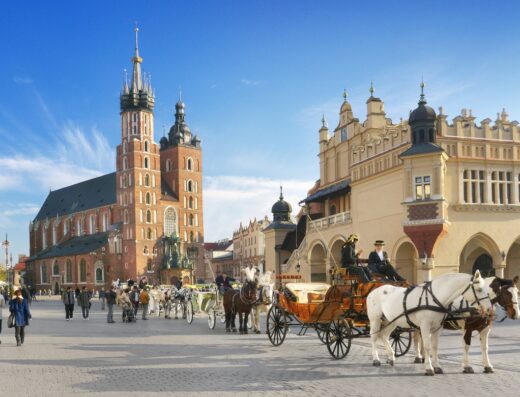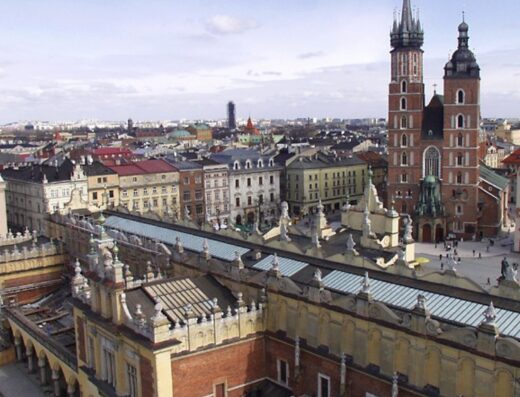The Jan Matejko House Museum is located in a family artistic house on ul. Floriańska 41.
Jan Matejko (1838-1893) – the most outstanding representative of the Polish cultivation of historical painting, collector, professor and long-time director of the School of Fine Arts in Krakow, was also a pioneer of the conservation and protection of monuments, a member of many artistic, scientific and social societies and associations.
After the artist associated with the society named after him, which aimed to honor the person of an outstanding painter who created a biographical museum in the house where he came from, he lived with his family, created and died.
The tenement house, built by the family, was collected through systematic inspections and donations, protected by Jan Matejko and his family, which was registered for the first time in 1898.
In 1904, the Society of Jan Matejko created a biographical museum under the management of the National Museum in Krakow.
Currently, the collection numbers over 8,000. exhibits. They include everyday use devices and souvenirs of artists and their sources: wife Teodora Matejkowa née Giebułtowska (1846-1896), children: Tadeusz (1865-1911), Helena Unierzyska (1867-1932), Beata Kirchmayerowa (1869-1926), Jerzy (1873-1827) and Regina (1878-1878), as well as other family members.
expand here original works all phases of creativity: early oil studies, compositional sketches for large canvases about historical articles (including: “Mikołaj Copernicus” [1871], “Jan Sobieski hands Canon Denhoff a letter to the Pope with news about the rule over the Turks “near Vienna in 1683” [1880]), examples of portraits of family and friends, as well as “Self-portrait” from 1887.
Valuable supervisory breeder It has been grouped into sketches for research, portrait studies, costume studies, architectural and landscape studies, and artistic crafts. another place describing family caricatures and watercolors about a historical article.
Available design boxes of polychromes for St. Mary’s Church in Krakow (1889-1891) are also stored. This realization was useful for renewing the use of wall painting in the work of his students: Stanisław Wyspiański and Józef Mehoffer.
Expressions of appreciation for Jan Matejko’s damage are frequent Polish and foreign medals, diplomas, certificates of membership in artistic and scientific associations, as well as the “scepter as a symbol of rule in art” presented to the artist by the Krakow City Council in 1878.
Valuable documents are also stored, including: Matejko’s letters to family and friends, as well as autographs, among others. Henryk Sienkiewicz, Władysław Czartoryski, Jacek Malczewski, Stanisław Tarnowski and Mikołaj Zyblikiewicz.
The creative museum also preserves the painter’s photographic activities, many publications from artistic sciences, e.g. those presenting Jan Matejko, a person of his influence and those who posed for the master.
Matejko’s collection includes a collection of artistic crafts, fabrics, clothing and military items, which are often provided by artists as props in action, many of them are unusual, interesting monuments of artistic and material value. Such an attack is a unique set of torture tools by Matejko from destruction during the renovation of the former town hall. Jan Matejko’s book collection includes old prints from the 16th to the 18th century, as well as historical and artistic publications, often with dedications to artists. There are also works about Jan Matejko published after his death, i.e. after 1893.
Objects outside the included gallery are exposed when the variable is displayed.
The Jan Matejko House simultaneously houses collections and popularizes unknown aspects of life and artistic work.





